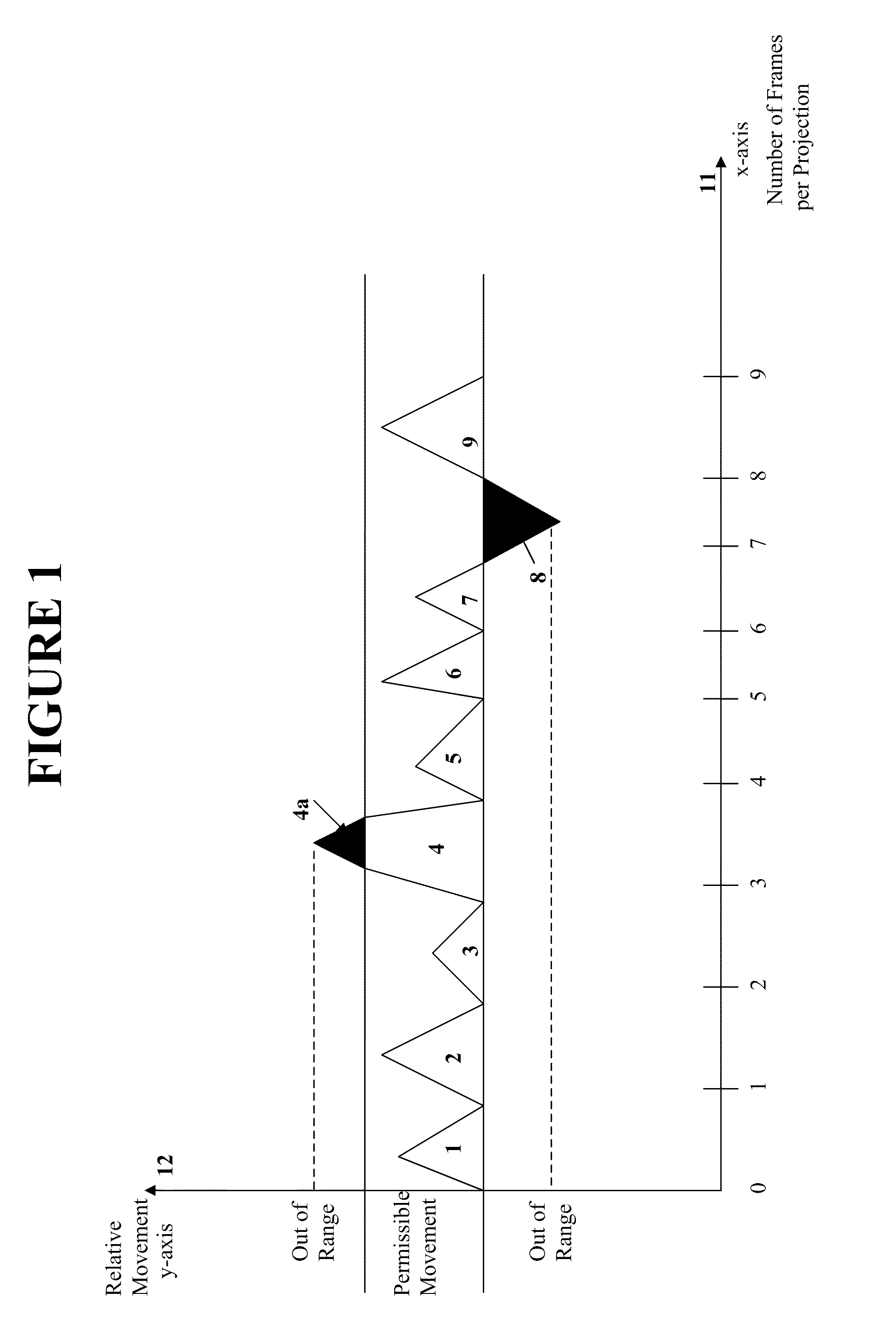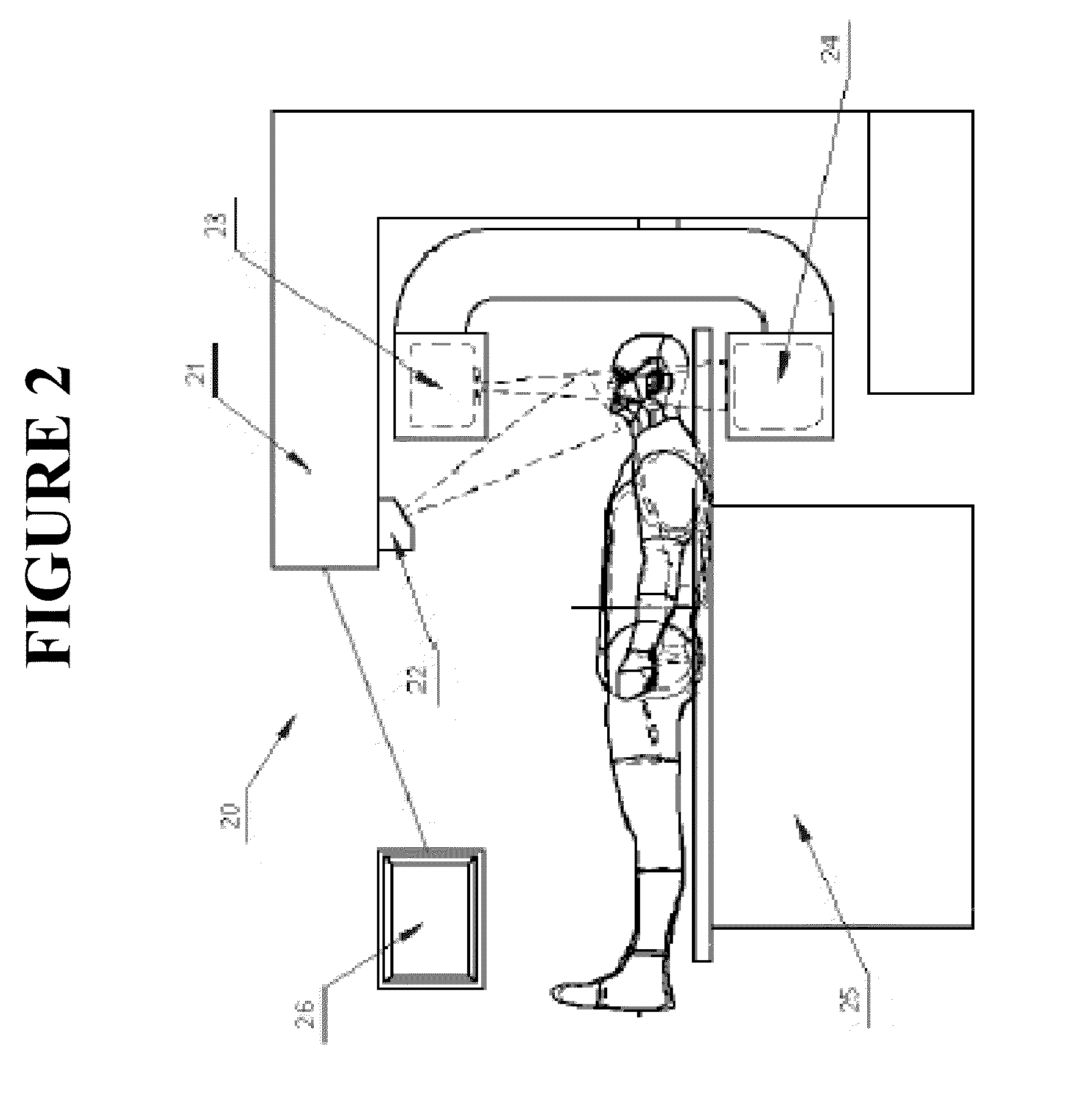To that end, the present invention contemplates improved methods and systems for obtaining computed tomographic reconstructions. A method for obtaining improved computed tomographic reconstructions includes obtaining one or more patient images using a camera, wherein the one or more patient images are obtained while a tomographic scan is performed on the patient; obtaining one or more tomographic projections during the tomographic scan for the patient; determining a total number of the one or more tomographic projections obtained during the tomographic scan; and for each of the one or more patient images obtained, correlating each patient image with the one or more tomographic projections obtained during the tomographic scan, calculating a position of the patient, determining if the calculated position of the patient is greater than one or more predetermined constants, and if it is determined that the calculated position of the patient is greater than one or more predetermined constants and a total number of the one or more tomographic projections obtained during the tomographic scan is less than a predetermined number, substituting a separate projection in place of the one or more tomographic projections that were correlated to the patient image obtained.
Alternatively, a method for obtaining improved computed tomographic reconstructions, includes obtaining one or more patient images using a camera, wherein the one or more patient images are obtained while a tomographic scan is performed on the patient; obtaining one or more tomographic projections during the tomographic scan for the patient; determining a total number of the one or more tomographic projections obtained during the tomographic scan; and for each of the one or more patient images obtained, correlating each patient image with the one or more tomographic projections obtained during the tomographic scan, calculating a position of the patient, determining if the calculated position of the patient is greater than one or more predetermined constants, and if it is determined that the calculated position of the patient is greater than one or more predetermined constants and a total number of the one or more tomographic projections obtained during the tomographic scan is greater than a predetermined number, either the tomographic scan is aborted or the tomographic reconstruction is reconstructed on a reduced arc (for example, 180° instead of 360°).
A method for obtaining improved computed tomographic reconstructions, includes, obtaining one or more patient images using a camera, wherein the one or more patient images are obtained while a computed tomographic scan is performed on a patient; obtaining one or more tomographic projections during the tomographic scan for the patient; determining a total number of the one or more tomographic projections obtained during the tomographic scan; and for each of the one or more patient images obtained, correlating each patient image with the one or more tomographic projections obtained during the tomographic scan; calculating a position of the patient; determining if the calculated position of the patient is greater than one or more predetermined constants; if it is determined that the calculated position of the patient is greater than one or more predetermined constants and a total number of the one or more tomographic projections is less than a predetermined number, substituting a separate projection in place of the one or more tomographic projections that were correlated to the patient image obtained; and if it is determined that the calculated position of the patient is greater than one or more predetermined constants and a total number of the one or more tomographic projections is greater than a predetermined number, aborting the tomographic scan or reconstructing the tomographic reconstruction on a reduced arc.
In addition, the present invention also contemplates a computed tomography system that includes a CT scanner, comprising a support structure, an x-ray source, one or more x-ray detectors positioned opposite the x-ray source and a camera. The camera obtains one or more patient images while a tomographic scan is performed on the patient and is used to determine movement by the patient during the tomographic scan. A processor determines a total number of the one or more tomographic projections obtained during the tomographic scan, and for each of the one or more patient images obtained, correlates each patient image with the one or more tomographic projections obtained during the tomographic scan for the patient. The processor calculates a position of the patient for each of the one or more patient images obtained and determines if the calculated position of the patient is greater than one or more predetermined constants. If it is determined that the calculated position of the patient is greater than one or more predetermined constants and a total number of the one or more tomographic projections obtained during the tomographic scan is less than a predetermined number, the processor substitutes a separate projection in place of the one or more tomographic projections that were correlated to the patient image obtained.
Alternatively, or in addition, a computed tomography system includes a CT scanner, comprising a support structure, an x-ray source, one or more x-ray detectors positioned opposite the x-ray source and a camera. The camera obtains one or more patient images while a tomographic scan is performed on the patient and is used to determine movement by the patient during the tomographic scan. A processor determines a total number of the one or more tomographic projections obtained during the tomographic scan, and for each of the one or more patient images obtained, correlates each patient image with the one or more tomographic projections obtained during the tomographic scan for the patient. The processor calculates a position of the patient for each of the one or more patient images obtained and, determines if the calculated position of the patient is greater than one or more predetermined constants. If it is determined that the calculated position of the patient is greater than one or more predetermined constants and a total number of the one or more tomographic projections obtained during the tomographic scan is greater than a predetermined number, either the tomographic scan is aborted or the tomographic reconstruction is reconstructed on a reduced arc (for example, 180° instead of 360°).
 Login to View More
Login to View More  Login to View More
Login to View More 


